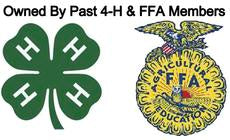Kenya's government is to inaugurate a project that will encircle much of the country's highest peak with an electric fence to stop wild animals straying.
It is being designed to stop wildlife, particularly elephants, on Mt Kenya from destroying crops on nearby farms.
On completion it will be about 400km (250 miles) long, stand 2m (6ft 6in) high and extend a metre underground.
The charity building the fence, Rhino Ark, believes it will take five years to complete.
"It is going to encircle 2,000 sq km (772 sq miles) of indigenous forests on the mountain, and a source of many, many rivers and outflows in all directions from the mountains," Colin Church from Rhino Ark told the BBC.
According to the charity, it is being done in collaboration with the Kenya Wildlife Service and with the support of the Kenya Forest Service.
Mt Kenya, at 5,199m, is Africa's second highest peak and the mountain and its forest were designated as a World Heritage site by Unesco in 1997.
Wildly optimistic?
The fence, which will have five electrified strands, will discourage wild animals from straying from the mountain's forests and devastating crops on the small holdings on the other side of the fence.
It discharges a shock, but not one that endangers people or animals.
Building the first phase of the fence, which will be 50km long, has already begun and is expected to be completed by the beginning of 2014, Rhino Ark says.
Minister of Finance Njeru Githae is to drive a post into the ground to officially inaugurate the project on Friday.
BBC Africa analyst Martin Plaut says the scheme may seem wildly optimistic, but Rhino Ark has already fenced in the Aberdare mountains, which provide water for Kenya's capital, Nairobi.
That fence took 12 years to complete.
But with government support and finance, Mr Church believes the Mt Kenya project, expected to cost about $11.8m (£7.4m), should be much faster.
The charity raises $1m a year from a sporting event - the Rhino Charge - an off-road motorsport competition that has been held in Kenya every year since 1989.





